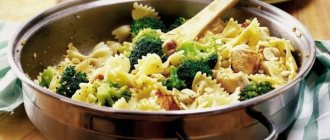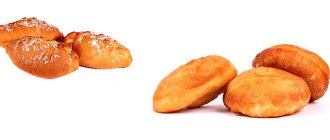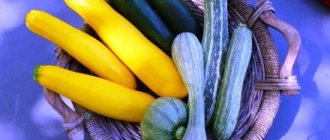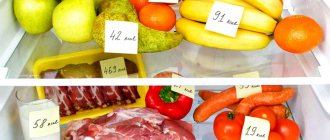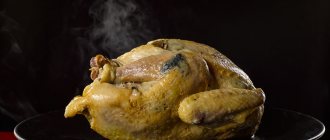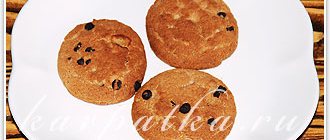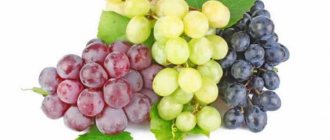Pasta is rightfully considered one of the most beloved and sought-after products on our entire planet. The composition of the ingredient includes almost all the valuable vitamins and microelements that a person needs for full life. It will be useful to know the calorie content of the presented product for those who adhere to a rational and balanced diet.
People's attitude towards this product
What do you and I know about such a product as pasta? The manufacturer always indicates its composition on the packaging, but how many of us study useful information? Almost every consumer knows that the presented ingredient consists of wheat, and those who watch their figure know about the preferential consumption of products made from durum cereal varieties. Pasta is revered for its extraordinary external diversity, which we owe to the Italians. In some countries, pasta with ketchup is a traditional breakfast; residents of other countries cannot imagine their lunch without a portion of pasta with meat or cheese sauce. Durum pasta (we will find out the composition of the product a little later) is preferred by lovers of a healthy lifestyle, complementing the usual dish with herbs, spinach and wheat sprouts.
What are the benefits of spelled pasta?
The word “spelt” always brings to mind the fairy tale by A. S. Pushkin. In fact, this is a special type of flour, which surpasses all other types in fiber content. There is no harm from whole grain pasta, but the benefits are difficult to overestimate. After all, the products contain 18 amino acids necessary for the human body.
People who regularly consume pasta made from spelled and durum wheat are less likely to get sick:
- diabetes mellitus;
- obesity;
- anemia;
- viral and infectious diseases;
- oncology.
The risk of stroke and heart attack is also reduced due to the special properties of such products.
Warning! Despite the benefits of hard spelled pasta, it is not recommended to include it in the menu for people with weak intestines, since it contains a lot of coarse dietary fiber.
Types of pasta
How many types of wheat product are there? Let's start with the fact that cooking technology distinguishes pasta into raw and dry. We are used to using dry ones because of their longer shelf life. Based on size, the product is divided into the following varieties:
- long (noodles, spaghetti, bucatini and other Italian delights);
- medium-sized and short (spirals, feathers, shells and others);
- small, mainly suitable as an ingredient in soup (stars, cobwebs).
Large pasta (the composition of the product will be presented in this article) is intended for making lasagna. There are also filled varieties (ravioli) and multi-colored pasta with the addition of dried spices, herbs and vegetables. Nowadays, it is especially important to consume pasta made from wholemeal flour, as well as with the addition of buckwheat flour to wheat. A traditional Chinese dish - glass noodles - is still considered exotic on our table.
Which is healthier: pasta or spaghetti?
The right pasta, according to nutritionists, has beneficial properties. Of course, if you don’t eat large portions of pasta at night. We are not talking about all types and varieties of this product, but about spaghetti or, as the Italians say, pasta.
The benefit of spaghetti is that it is made from durum wheat:
- This is the product that is recommended for lowering cholesterol levels and for problems with the cardiovascular system. In Italy, they believe that a serving of spaghetti can improve vitality, as it contains a large amount of amino acids. They activate the production of serotonin, which is called the hormone of happiness.
- The benefit of spaghetti made from durum wheat is that it contains selenium, which does not allow the cells of the human body to degenerate.
Attention! Pasta, for the production of which using flour made from durum wheat, also has the same beneficial properties.
Pasta: product composition. Vitamins and minerals
Before we look at a detailed list of the chemical elements contained in the presented product, let's talk about a vitamin-like substance such as choline, which accounts for 52.5 mg in 1 kg of dry pasta. This substance has a beneficial effect on the human nervous system, is an antidepressant, normalizes fat metabolism in the body, can protect tissue cell membranes from destruction, and also reduces cholesterol levels in the blood.
Next, we will find out a complete list of vitamins based on the most popular products in Russia (Makfa pasta). Product composition includes:
- B vitamins (folic acid, riboflavin, thiamine, pyridoxine, and pantothenic acid);
- vitamins of group E;
- vitamins P (including niacin equivalent);
- biotin;
- choline
The list of minerals contained in the product is represented by such useful chemical elements as:
- potassium (123 mg);
- calcium (19 mg);
- sodium;
- magnesium (16 mg);
- iodine;
- iron (1.6 mg);
- zinc;
- copper (700 mcg);
- sulfur (71 mg) and others.
Types of non-traditional pasta
- Non-traditional pasta.
- Instant pasta.
- Semi-finished pasta
Production of non-traditional pasta
In accordance with GOST, traditional pasta is pasta made from wheat flour and water with or without the addition of egg products.
Non-traditional pasta includes all other pasta products. those. These include pasta made from rye flour, whole-ground sprouted wheat, corn, rice, buckwheat flour, starch, etc.
Non-traditional pasta products include pasta for baby food and diet food.
Baby food pasta
Baby food pasta: pasta intended for feeding children under 14 years of age and meeting the physiological needs of the child’s body. The protein content of children's pasta should be more than 13%.
Diet food pasta
Pasta products for dietary nutrition: Pasta products intended for therapeutic and preventive nutrition
- Whole grain pasta is made from sprouted grains and contains a large amount of dietary fiber and microelements.
The technology for the production of grain pasta includes germination of grain, dispersion of grain mass, drying or moistening of grain mass up to 36%, kneading dough, pressing and drying.
Grain pasta has a reduced calorie content and, after cooking, has a pleasant taste and aroma.
Studies have shown that the biological value of such pasta is 3 times higher than that of traditional products made from premium flour. Therefore, their consumption makes nutrition physiologically more complete, and also allows you to diversify your daily diet.
Grain pasta can become a component of a therapeutic diet, as they contain substances that lower cholesterol levels in the blood, can delay the development of certain tumors, slow down the aging process of the skin and atherosclerosis, and also cleanse the body of toxins.
Regular consumption of this product improves the functions of the digestive system, prevents the development of diseases of the gastrointestinal tract, and helps maintain normal cholesterol levels in the blood.
Nutritional value of 100 g of product:
- proteins – 11.9g, fats – 2.2g, carbohydrates – 59.8g,
- dietary fiber – 10.8;
- energy value – 306 kcal;
Minerals: Na – 7 mg; K – 348 mg; Ca – 45 mg; Mg – 109 mg; P – 257 mg; Fe – 5 mg;
Vitamins: B1 – 0.1 mg; B2 – 0.13 mg; RR – 5.2 mg
Intended for people with increased body weight, metabolic disorders and diabetes.
- “Rye” pasta – made from peeled rye or wallpaper flour, such pasta contains a larger amount of vitamins B and PP, carbohydrates, and has a well-balanced amino acid composition.
Rye flour products should be considered a necessary component of the daily diet, since they are the main source of vitamins B and PP, iron, phosphorus and calcium compounds in human nutrition.
A feature of rye flour is its high content of complex carbohydrates, such as fiber, hemicelluloses, starch, sugars (sucrose and trifructosans). Compared to wheat flour, the protein complex of rye flour is better balanced in amino acid composition. Due to the increased content of fiber and hemicelluloses, products made from it have a lower calorie content.
Rye pasta is especially recommended for people with metabolic disorders for the treatment and prevention of diabetes. A certain stabilization of blood glucose levels has been established with the regular inclusion of rye pasta in the diet.
Nutritional value of 100 g of product:
- proteins – 8.0g, fats – 1.7g, carbohydrates – 62.5g,
- dietary fiber – 12.4; energy value – 307 kcal
Minerals: Na – 7 mg; K – 348 mg; Ca – 45 mg; Mg – 109 mg; P – 257 mg; Fe – 5 mg;
Vitamins: B1 – 0.1 mg; B2 – 0.13 mg; RR – 5.2 mg
Intended for people: With impaired metabolism and increased body weight.
- Pasta with seaweed - made from durum wheat flour and 10% ground seaweed, which contains a large amount of iodine, insoluble polysaccharide fibers and amino acids.
Produced from wheat flour with the addition of seafood rich in complex minerals and iodine. Iodine is needed by the body primarily for the formation of thyroid hormones. Hormones containing iodine regulate metabolism and participate in the regulation of the functions of the cardiovascular system. They are important for the development of the central nervous system, for the growth of the body, its resistance to adverse environmental factors.
Regular consumption of pasta with natural iodine-containing additives allows you to meet the human need for easily digestible iodine in sufficient quantities and thus regulate the activity of the endocrine system, normalize metabolism, strengthen and improve the general condition of the body.
Nutritional value of 100 g of product:
- proteins – 10.5g, fats – 1.2g, carbohydrates – 57.5g,
- energy value – 308 kcal
Minerals: K – 229 mg; Ca – 30 mg; Mg – 76 mg; P – 168 mg; Fe – 71 mg; I – 267 mg;
Vitamins: B1 – 0.04 mg; B2 – 0.1 mg; RR – 4.2 mg;
Designed for people with:
- thyroid dysfunction
- with iodine deficiency
- to regulate the functions of the cardiovascular system
- with diseases of the central nervous system.
- Pasta with Jerusalem artichoke powder - prepared from durum wheat and 10% dried ground Jerusalem artichoke.
Nutritional value of 100 g of product:
- proteins – 10.8g,
- fats – 1.2g,
- carbohydrates – 66.9g
- energy value kcal
Contains: inulin, fructose, pectin fiber, iron, silicon, essential amino acids, trace elements and vitamins.
Intended: for people with diabetes, improve metabolism.
- Protein-free pasta
Protein-free pasta is specially created for patients with phenylketonuria and people in need of a low-protein diet. This is one of the few domestically produced products for preventive and therapeutic purposes, affordable and familiar in taste.
Protein-free pasta is made from corn starch with the addition of 18% swelling starch. Vegetable, fruit or berry powders can be used as additional raw materials in an amount of 3%. The protein content of protein-free pasta should not exceed 1%.
Nutritional value of 100 g of product:
- proteins –0.9g;
- fats – 0.6g;
- carbohydrates – 85.2g;
- energy value – 359 kcal
- Gluten-free pasta.
Produced from grains that do not contain gluten. These grains include corn, rice and buckwheat. Gluten-free pasta is included in the diet for celiac disease. Gluten-free pasta is produced and stored separately from other products containing gluten. The gluten content in gluten-free pasta should not exceed 20 mg/kg of product. Corn pasta is produced from corn flour and 18% modified starch.
Nutritional value of 100 g of product:
- proteins – 6.0 g, fats – 0.6 g,
- carbohydrates – 80.4 g,
- energy value - 343 kcal
Vitamins: B1 – 0.16 mg, B2 – 0.06 mg; PP – 0.7 mg, β-carotene – 0.08 mg
- Rice pasta is produced from rice flour and 18% modified starch
Nutritional value of 100 g of product:
- proteins – 8.0 g, fats – 0.58 g, carbohydrates – 79.6 g,
- energy value – 343 kcal
Vitamins: B1 – 0.03 mg; B2 – 0.02 mg; PP – 0.65 mg
Minerals: Na – 4.8 mg; K – 40 mg; Ca – 3.2 m; Mg – 20 mg; P – 60 mg; Fe – 0.4 mg
- Buckwheat pasta is produced from buckwheat flour and 18% modified starch
Nutritional value of 100 g of product:
- proteins – 9 g, fats – 0.55 g, carbohydrates – 80.5 g
- energy value – 343 kcal
Vitamins: B1 – 0.17 mg, B2 – 0.08 mg, PP – 1.7 mg
Minerals: Na – 1.2 mg, K – 152 mg, Ca – 8 mg; Mg – 80 mg, P – 119 mg, Fe – 2.7 mg
Instant pasta
The department of technology and assortment of pasta production of the State Scientific Research Institute of Chemical Industry has developed a national standard “Instant pasta products. General technical conditions".
The new state standard is aimed mainly at ensuring the quality and safety of instant pasta, as well as partial harmonization with the requirements of international standards.
Classification of instant pasta
Instant pasta is made in the form of long corrugated strands of noodles or vermicelli, formed into skeins, bows, nests, and briquettes.
Main raw materials used for the production of instant pasta
- soft glassy wheat flour for pasta
- highest and first grades according to GOST 12306;
- wheat flour;
- drinking water.
When making instant pasta, it is recommended to use flour with the following quality indicators:
- Amount of protein,%, not less than 10
- Acidity, degrees, no more than 2
- Gluten stretchability, cm 14÷20
- Passage through a sieve with a hole size of 87 microns, %, no more than 30
- Falling number, s, not less than 250
Additional raw materials used in the production of instant pasta
- table salt, granulated sugar, black and white pepper, ground red pepper, dried garlic, dried onions, dried table carrots, dried table beets, dried green peas, dried parsley, celery and dill, dried corn, sunflower oil, soybean oil, palm oil;
- food additives (dyes, antioxidants, emulsifiers, stabilizers, thickeners, acidity regulators, flavor and aroma enhancers), flavoring additives (natural or identical to natural), meeting the requirements of SanPiN 2.3.2.1293 and SanPiN 2.3.2.1078.
Technological scheme for the production of instant pasta:
The production scheme for instant pasta includes the dosage of flour and water, kneading the dough, distributing the dough into rolls, rolling the dough into a thin sheet, cutting the dough sheet into vermicelli or noodle strands, steaming, cutting the vermicelli into portions, drying in oil, cooling and packaging.
Figure 1 – Scheme for the production of instant pasta
- Dough kneading is carried out alternately in two dough mixing troughs. The flour is mixed with an aqueous solution of fortifying and food additives. Additives are added to give structure to the finished pasta.
- Rolling and slitting system – designed to produce a flat dough strip.
A flat ribbon is formed from dough by sequential rolling through successive rollers until the ribbon reaches a thickness of 1 - 2mm. Semi-finished curly vermicelli or noodles are formed from a ribbon through continuous longitudinal cutting. The last roller group is knives. Depending on the type of knife, the dough ribbon is cut into strands of vermicelli or noodles.
- Steaming is intended for preliminary heat treatment of semi-finished figured noodles.
In order for products to be brewed with boiling water, heat treatment is necessary; such treatment leads to partial denaturation of proteins and partial gelatinization of starch.
Steaming is carried out in a steam chamber, which consists of a conveyor belt and a ventilation chamber to remove condensate. The essence of the steaming system is as follows: the semi-finished noodle product is continuously fed into the chamber and during the movement is subjected to heat treatment at a water vapor temperature of 105 - 1100C, the passage time is from 2 to 5 minutes, the remaining steam is removed by the ventilation system, and the condensate falls into the tray of the steam chamber. The processed noodles are cooled by air currents.
- Cutting is carried out by a unit for portion cutting of semi-finished noodles. Portions of the semi-finished product are placed in special baths for drying and transportation to a frying bath for drying. Portions of vermicelli can range from 30 – 90 g.
- Drying. The process of drying pasta involves removing moisture from the product in a boiling layer of oil. A feature of this drying process is the use of oil heated to a boil as a coolant. The quality indicators of the oil used for drying must have certain quality and safety indicators.
Trays with trays in which chopped semi-finished noodles are laid out are continuously fed into the drying chamber using a conveyor. The oil temperature is 1400C if heated by steam and 160 - 1800C if heated by heat, the passage time is 2 - 4 minutes.
- Cooling. After drying the briquettes, trays with baths are conveyed through a conveyor into a cooling device. Cooling occurs by air flow at a temperature of 25 - 280C.
If the technological production conditions are violated, pasta products have an unsatisfactory structure, due to which the products absorb a large amount of fat during drying in oil, quickly absorb water when brewing and at the same time acquire a soft consistency and swell greatly. Due to the high fat content in the product, the process of increasing the acid and peroxide number may occur more intensively, and due to this, the shelf life of pasta can be significantly reduced.
- Package. Ready briquettes are packaged in cups, trays or polypropylene film.
When making instant pasta, each package may additionally include a bag of spices, and/or seasoning oil, and/or natural (identical to natural) products of plant and animal origin. The share of pasta must be at least 80% of the contents of the package.
- Marking. The consumer packaging for instant pasta indicates:
- name of the manufacturer;
- trademark (if any);
- product names
- net weight at standard humidity;
- shelf life;
- dates of manufacture;
- ND designations
- energy and nutritional value
Labeling information is located directly on each unit of consumer packaging in a place convenient for reading. On consumer packaging that does not provide the ability to visually identify the packaged product, a design corresponding to its shape and size is applied.
Shelf life of instant pasta from the date of production, depending on the vegetable oil used for drying, months:
- 12 – palm oil;
- 6 – soybean oil;
- 3 – sunflower oil.
Quality requirements for instant pasta
Instant pasta products are evaluated according to organoleptic and physicochemical indicators.
Organoleptic characteristics of instant pasta:
- Taste – characteristic of this product, without rancid or foreign taste
- The smell is characteristic of this product, without rancid or foreign odor
- Condition of the products after cooking – the products should not stick together after cooking. Products must retain the shape of a corrugated string of noodles (vermicelli) after 15 minutes from the moment they are poured with boiling water
Physico-chemical parameters of instant pasta:
- Humidity of products, %, no more than – 5
- Acidity of products, degrees, no more than – 4
- Ash, insoluble in 10% HCI solution, %, no more than – 0.2
- Cooking time until done, min, no more – 5
- Fat content,%, no more than – 25
- Metallomagnetic impurity, mg per 1 kg of product, no more than – 3
- Pest infestation – Not allowed
- Quality of fat in instant pasta dried in oil:
Table 2 - Requirements for the quality of fat in instant pasta
Production of pasta that does not require cooking using technologies from PAVAN, BHULLER, FAVA
In order for the products to be prepared by simply brewing with boiling water, additional processing of the pasta is necessary. This treatment leads to partial denaturation of proteins and partial gelatinization of starch, i.e. to preliminary “cooking” of products.
The scheme includes dosing flour and water, pre-mixing, kneading, pressing and cutting, as in conventional pasta production. After cutting, the product undergoes surface drying to secure its shape. After which the pasta is immersed in a cauldron of boiling water for several minutes or fed into a steam chamber, where it is boiled by about 90%. This is followed by drying. The finished product looks like traditional pasta.
Figure 2 – Scheme for the production of pasta that does not require cooking using technologies from PAVAN, BHULLER, FAVA
Steam treatment is carried out in steamers with a vibrating conveyor.
There is a technology that uses complete steaming of raw products with a humidity of 28...32% and with a wall thickness of 0.6...0.8 mm, which is achieved by treating them with superheated steam at a temperature of 105...120 oC for about 10 minutes. After drying, the starch in such products is in a modified state: when it is moistened with hot water, the properties of gelatinized starch are restored.
Production of semi-finished pasta. Methods for extending shelf life
Semi-finished pasta
A technological semi-finished product that has been molded, at all stages of drying, or ready for sale in raw or frozen form.
The shelf life of semi-finished pasta is 24 hours.
To extend shelf life up to 30......130 days, various processing methods are used:
- Freezing;
- Pasteurization or sterilization;
- Vacuum packaging;
- Packaging in a controlled gas environment.
Below are various methods of conducting a technological process that can extend the shelf life of semi-finished pasta.
- Method 1 – Shelf life 2-3 months. in a refrigerating chamber at a temperature of 2–30C.
- Kneading;
- Pressing and cutting;
- Package;
- Sterilization for 10-20 minutes at a temperature of 120-130 degrees
- 2nd method of heat treatment with vacuum packaging. Shelf life 3-6 months. In the refrigerator compartment.
- Kneading;
- Pressing and cutting;
- Sterilization at a temperature of 200 degrees, 2-10 minutes;
- Vacuum packaging
- Method 3 The shelf life during pasteurization of packaged products is 1 – 3 months.
- Kneading;
- pressing and cutting;
- Pasteurization of raw products with steam at 95-97 degrees for 40-60 minutes;
- Cooling;
- Package
- Method 4 Shelf life 3-6 months in the refrigerator.
- Kneading;
- Pressing and cutting of products;
- Steaming/cooking products;
- Washing is necessary to reduce product sticking;
- Drying, needed to reduce humidity to 27%, drying temperature 700C, drying time 30 - 40 minutes;
- Cool to room temperature;
- Freezing up to (-300С)
- Method 5 – vacuum packaging Shelf life 3-6 months in the refrigerator.
- Kneading;
- Pressing and cutting;
- Vacuum packaging;
- Method 6 – packaging in a controlled gas environment. Shelf life 1-6 months in a refrigerator.
- Kneading;
- Pressing and cutting;
- Packing in moisture- and gas-proof film. Carbon dioxide, nitrogen or a mixture thereof is used as a gaseous medium.
Calorie content of products
It is customary to consider the energy value of products in the ratio of proteins, fats and carbohydrates per 100 grams of weight. So, pasta (we studied the composition and nutritional value a little earlier) contains 70.5 g of carbohydrates, 11 g of protein and 1.3 g of fat. If we take into account the calorie content of the product, which is 338 kcal per 100 grams, then it can decrease slightly during cooking. That is why those who are watching their figure should not be afraid of pasta dishes. Fatty sauces, meat and fish are what make pasta high in calories.
How to choose pasta
When choosing pasta, you need to pay attention to the following points:
- The healthiest products of groups A and B are sold only in sealed packs.
- The composition should not contain eggs, but only water and flour of a certain type.
- The most beneficial properties are found in products made from durum flour.
- The type and type of flour also matters, because not everyone can tolerate wheat. Therefore, you need to pay attention to this too. Pasta is made from buckwheat, barley, corn and rice flour.
- You should not think that you should buy only those products that are made from premium and first-grade flour. Grade 2 pasta is no less beneficial, since it is made from wholemeal flour, which contains a lot of fiber.
Important! You also need to check the integrity of the vacuum packaging. If it is violated, it is better to refuse the purchase.
Appearance of pasta
You also need to pay attention to the appearance of the product. Quality pasta should have a golden or amber color. If the products are acrid yellow, then synthetic dyes have been added to them. If the product is white or grayish in color, it means low quality flour was used for production.
It is equally important to consider the structure of pasta:
- Dark inclusions are one of the important characteristics of the product. They indicate that the pasta is made from whole grain milling.
- The products have white speckles and a rough surface - low quality flour was used.
- If the shape of all pasta is the same and corresponds to the name, you can buy it.
Checking the quality of pasta
It is impossible to get an accurate picture of the quality of pasta based on the inscription on the label and appearance. Further checking needs to be done at home:
- High quality products do not break, but are easy to bend.
- If soft flour is used in production (which is unacceptable according to GOST), then there will be a lot of crumbs in the pack or bag.
- The next stage of testing is cooking. A high-quality and healthy product made from durum wheat will not stick together or lose its shape.
- During cooking, the water remains almost clear, the turbidity is insignificant.
- All that remains is to try the dish. If you feel bitterness, it means the flour was stored incorrectly. Bitterness is the result of spoiled fats that are part of wheat grains.
Diet recipe: pasta with arugula and spinach
So, as we promised, we present an unusual recipe to all lovers of tasty and healthy food. Additional ingredients of the dish contain vegetable protein and will further enrich the dinner table with vitamins. Before we start preparing the dish, let’s ask which foreign manufacturers are popular in our country and whether their products differ from similar domestic ones? Traditionally, the No. 1 pasta in Italy is considered to be the Barilla brand. Pasta and product composition meet all GOST requirements and also have an incredibly wide range. This is why the brand has become so popular in Russia. Those consumers who value European quality can use the products of this brand in preparing their dishes. Here is a list of ingredients that we will need:
- curly paste – 100 g;
- hard cheese – 70 g;
- spinach – 100 g;
- arugula - 100 g;
- sprouted wheat – 1 handful;
- butter – 40 g;
- garlic – 2 cloves;
- salt.
If our reader is a fan of domestic production and is used to saving a pretty penny, then we advise you to pay attention to Shebekin pasta. The composition of products and product quality also meet established standards.
Product calorie analysis
SHARE OF BZHU IN CALORIES
Ratio of proteins, fats and carbohydrates:
Knowing the contribution of proteins, fats and carbohydrates to calorie content, you can understand how well a product or diet meets the standards of a healthy diet or the requirements of a certain diet. For example, the US and Russian Departments of Health recommend 10-12% of calories come from protein, 30% from fat and 58-60% from carbohydrates. The Atkins diet recommends low carbohydrate intake, although other diets focus on low fat intake.
If more energy is expended than it is received, the body begins to use up fat reserves, and body weight decreases.
- Vitamin PP
is involved in redox reactions of energy metabolism. Insufficient vitamin intake is accompanied by disruption of the normal condition of the skin, gastrointestinal tract and nervous system. - Silicon
is included as a structural component in glycosaminoglycans and stimulates collagen synthesis. - Cobalt
is part of vitamin B12. Activates enzymes of fatty acid metabolism and folic acid metabolism. - Manganese
is involved in the formation of bone and connective tissue, and is part of enzymes involved in the metabolism of amino acids, carbohydrates, and catecholamines; necessary for the synthesis of cholesterol and nucleotides. Insufficient consumption is accompanied by slower growth, disturbances in the reproductive system, increased fragility of bone tissue, and disturbances in carbohydrate and lipid metabolism. - Copper
is part of enzymes that have redox activity and are involved in the metabolism of iron, stimulates the absorption of proteins and carbohydrates. Participates in the processes of providing oxygen to the tissues of the human body. Deficiency is manifested by disturbances in the formation of the cardiovascular system and skeleton, and the development of connective tissue dysplasia. - Molybdenum
is a cofactor for many enzymes that ensure the metabolism of sulfur-containing amino acids, purines and pyrimidines.
more hide
Energy value, or calorie content
- this is the amount of energy released in the human body from food during the digestion process. The energy value of the product is measured in kilocalories (kcal) or kilojoules (kJ) per 100 grams. product. The kilocalorie used to measure the energy value of food is also called a food calorie, so when caloric content is reported in (kilo)calories, the prefix kilo is often omitted. You can see detailed energy value tables for Russian products.
The nutritional value
— content of carbohydrates, fats and proteins in the product.
Nutritional value of food product
- a set of properties of a food product, in the presence of which the physiological needs of a person for the necessary substances and energy are satisfied.
Vitamins
, organic substances required in small quantities in the diet of both humans and most vertebrates. Vitamin synthesis is usually carried out by plants, not animals. A person's daily requirement for vitamins is only a few milligrams or micrograms. Unlike inorganic substances, vitamins are destroyed by strong heat. Many vitamins are unstable and are “lost” during cooking or food processing.
Pasta is rightfully considered one of the most beloved and sought-after products on our entire planet. The composition of the ingredient includes almost all the valuable vitamins and microelements that a person needs for full life. It will be useful to know the calorie content of the presented product for those who adhere to a rational and balanced diet.
Quick and healthy dish
Heat the oil in a frying pan, cut the peeled garlic into slices and fry until golden brown. A fragrant, vigorous aroma spreads throughout the kitchen from the first seconds. Chop the arugula and spinach into pieces with your hands and add to the garlic in a frying pan, fry the ingredients, stirring constantly and quickly. Then the wheat sprouts are sent to the fire. Mix the mixture and we can turn off the stove.
The water from the pasta has been drained, which means you can add the freshly cooked ingredient to the pan. There is one final touch to preparing this dish: sprinkle the pasta with grated cheese and stir the contents of the pan one last time.
Useful tips and general recommendations
It is advisable to offer the product to the child in the first half of the day.
In this case, the child’s body will have time to spend the calories received. Eating such food in the evening will lead to digestive problems, because the gastrointestinal tract will not be able to rest at night. The resulting unspent energy is converted into fat tissue. To prevent the side dish from sticking, you can add 1 tsp to the water. olive oil. It is one of the safe products that are introduced into the menu from an early age, so in the absence of specific health problems it will not harm.
Without fear of extra pounds
Followers of dietary nutrition are well aware of the high calorie content of cheese. Therefore, our tasty and healthy dish can easily do without this component. The finished dish can be consumed immediately; it is most often served for lunch.
The recipe for this dish is perfectly balanced. Vegetable fiber, vegetable protein of spinach and hard cheese, wheat sprouts enriched with flavonoids, vitamins and carbohydrates of pasta organically complement and compensate for each other. This dish is organic, aesthetically pleasing and complete and is suitable for both gourmets and aesthetes, and as a dietary variety. Well, for those who like separate meals, we can advise replacing butter in the recipe with olive or sunflower oil.
Benefits and harms of the product
Proteins, lipids and carbohydrates saturate the human body with irreplaceable energy, and an almost complete list of vitamins and microelements enable a person to function normally. Those who mistakenly consider pasta (the composition of the product, information for consumers is posted in the presented article) to be an enemy of the diet can be recommended to turn their attention to the recipe that we will provide at the end of the article. It turns out that it is not wheat products that are harmful to health, but fatty and meat sauces, which can easily be replaced with vegetable additives.

